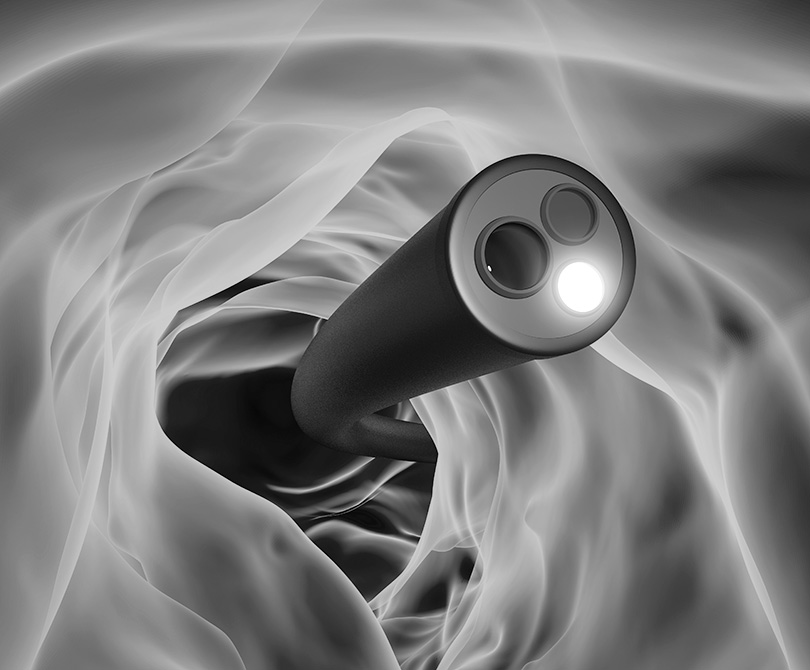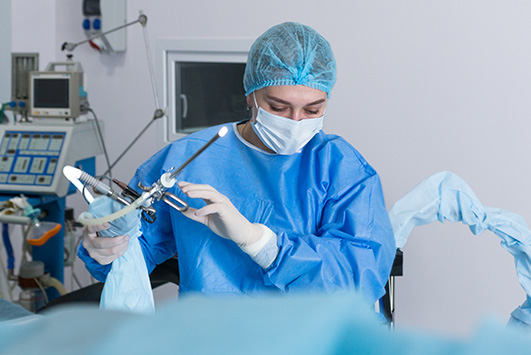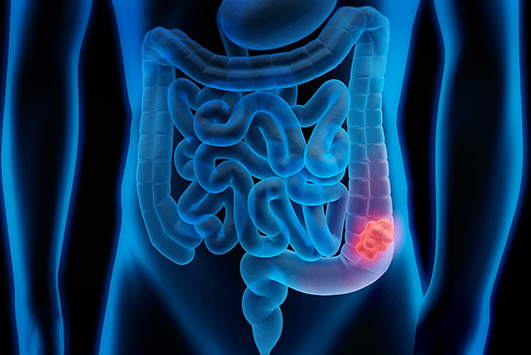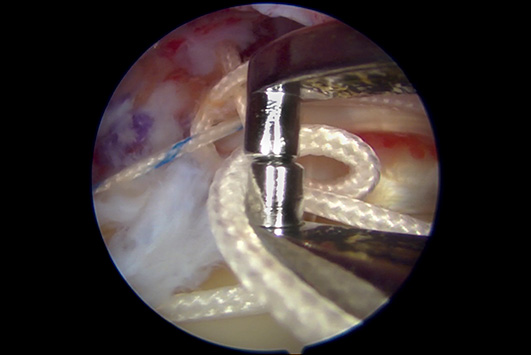
Biomedical textiles are proving to be an excellent replacement for wire and metal components in steerable catheters and other devices for endoscopic instruments. Textiles can also enable specialized solutions for robot-assisted procedures that offer smoother glide and more flexibility.
![]()
Biomedical Textiles for Endoscopy Devices and Instruments
Biomedical textiles are proving to be an excellent replacement for wire and metal components in steerable catheters and other devices for endoscopic instruments. Textiles can also enable specialized solutions for robot-assisted procedures that offer smoother glide and more flexibility.
![]()
Endoscopic procedures provide clinicians and surgeons with access to examine organs or cavities within the body non-surgically (such as colonoscopies and Upper GI endoscopies) or through a small incision (such as laparoscopic surgery and Video-Assisted Thoracic Surgery (VATS)). Endoscopic procedures allow for much smaller incisions than open surgery thanks to the fact that the surgeon can see inside the body with a video camera attached to a flexible, low-profile tube inserted through a small incision. The surgeon is then able to use tiny surgical instruments while seeing the organs on a computer monitor in real-time. For example, esophageal varices or internal hemorrhoids may be endoscopically ligated. Endoscopic procedures result in less scarring, quicker recoveries, and less risk of complications from infection or blood loss.
Instead of metal, braided biomedical textiles can be used for the flexible cable that goes inside the tube to deploy or steer a catheter during teleoperated endoscopic treatment. In such procedures, it is important for the device to conform to tight bends and be able to rotate with as little friction as possible. Replacing metal with textiles allows devices to be MRI-safe, and textiles inherently provide smooth glide and more degrees of freedom and orientation.
For robotic-assisted endoscopy procedures, textiles are being incorporated into surgical robotics systems and may be used to deploy and steer an endoscopic catheter.
Benefits of using textiles in endoscopy procedures include:
- Smoother glide, lower coefficient of friction
- Ability to conform to anatomical curves and bends
- Smaller, thinner, and stronger than traditional metal
- MRI-safe
- High tensile strength
- Elongation
- Customizable dimensional measurements
With deep engineering expertise in creating unique and effective geometries with textiles, we strive to strike the right balance of size and strength, enabled by extensive physical and mechanical testing capabilities. Our customers enjoy that textiles have much more compliant properties than metals in terms of torque, flexibility and strength – giving them maximum flexibility for the design of their endoscopy innovations.
Our braids can bear significant weight, and the cylindrical shape makes them well-suited to wind through complex areas such as the digestive track, or to conform to twists and turns. We can customize the characteristics of different zones of a single braid – for example, enabling a high degree of flexibility at the distal end of a braid while being stable in the middle for maximum load bearing.
Learn more about our braiding solutions and products.



Endoscopic procedures provide clinicians and surgeons with access to examine organs or cavities within the body non-surgically (such as colonoscopies and Upper GI endoscopies) or through a small incision (such as laparoscopic surgery and Video-Assisted Thoracic Surgery (VATS)). Endoscopic procedures allow for much smaller incisions than open surgery thanks to the fact that the surgeon can see inside the body with a video camera attached to a flexible, low-profile tube inserted through a small incision. The surgeon is then able to use tiny surgical instruments while seeing the organs on a computer monitor in real-time. For example, esophageal varices or internal hemorrhoids may be endoscopically ligated. Endoscopic procedures result in less scarring, quicker recoveries, and less risk of complications from infection or blood loss.
Instead of metal, braided biomedical textiles can be used for the flexible cable that goes inside the tube to deploy or steer a catheter during teleoperated endoscopic treatment. In such procedures, it important for the device to conform to tight bends and be able to rotate with as little friction as possible. Replacing metal with textiles allows devices to be MRI-safe, and textiles inherently provide smooth glide and more degrees of freedom and orientation.
For robotic-assisted endoscopy procedures, textiles are being incorporated into surgical robotics systems and may be used to deploy and steer an endoscopic catheter.
Benefits of using textiles in endoscopy procedures include:
- Smoother glide, lower coefficient of friction
- Ability to conform to anatomical curves and bends
- Smaller, thinner, and stronger than traditional metal
- MRI-safe
- High tensile strength
- Elongation
- Customizable dimensional measurements
With deep engineering expertise in creating unique and effective geometries with textiles, we strive to strike the right balance of size and strength, enabled by extensive physical and mechanical testing capabilities. Our customers enjoy that textiles have much more compliant properties than metals in terms of torque, flexibility and strength – giving them maximum flexibility for the design of their endoscopy innovations.
Our braids can bear significant weight, and the cylindrical shape makes them well-suited to wind through complex areas such as the digestive track, or to conform to twists and turns. We can customize the characteristics of different zones of a single braid – for example, enabling a high degree of flexibility at the distal end of a braid while being stable in the middle for maximum load bearing.
Learn more about our braiding solutions and products.





